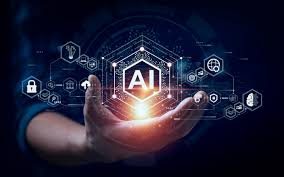India tops global AI usage with 92% users, but job fears loom large

In a world rapidly embracing the power of artificial intelligence, India has emerged as a surprising yet dominant leader. A recent global survey revealed that 92% of Indian employees are using generative AI tools at work, the highest percentage among all surveyed nations. While this signals a tech-savvy and adaptive workforce, it also brings forth an alarming counter-narrative: nearly half of these AI-using employees fear they could lose their jobs to the very technology they now rely on.
A Nation Embracing AI Like No Other
India’s unprecedented adoption of AI is not accidental. With a booming IT sector, a vibrant startup ecosystem, and millions of tech graduates entering the job market annually, the country has naturally become a fertile ground for AI experimentation and implementation. From customer support chatbots to content generation, data analysis, and code writing, AI tools are being embedded across business functions in India.
What’s even more remarkable is the enthusiasm with which employees are embracing this shift. According to the survey, Indian workers are not just using AI tools—they are using them frequently and confidently, often outpacing peers in more developed economies like the U.S., U.K., and Japan.
But Why the Worry?
Despite this high level of adoption, Indian employees are not entirely optimistic. 48% fear that AI could replace their jobs within the next 5 to 10 years, and many have expressed concerns about being underprepared for the future of work. This anxiety is more pronounced in roles that involve repetitive tasks or follow strict process flows—sectors like data entry, customer service, and logistics.
The paradox here is striking. The same employees who are advancing India’s AI leadership are also those most worried about becoming obsolete. The question arises: is India moving too fast without building a safety net?
The Reskilling Gap
One major reason behind this fear is the lack of structured reskilling and upskilling programs. While companies have introduced AI tools into workflows, not all have invested equally in training their staff to use these tools in a way that enhances their value rather than replacing them.
Only about 36% of workers feel they’ve received adequate AI training, and many are learning through informal channels or trial-and-error. This leaves a vast majority vulnerable to disruption, particularly older professionals who are not as digitally fluent as their younger peers.
Job Creation or Job Displacement?
It’s true that AI can create new opportunities. New roles like AI trainers, data annotation specialists, prompt engineers, and AI ethicists are gaining traction. However, these jobs require new skillsets—ones that are currently in short supply in India’s traditional workforce.
Moreover, AI is automating low-skill and mid-skill jobs at a faster pace than new roles are being created. For example, Business Process Outsourcing (BPO) firms are already integrating AI voice assistants and email bots, reducing the need for large teams of human agents.
A recent report by a leading consulting firm warned that over 2 crore (20 million) jobs in India could be at risk over the next few years due to AI and automation if proactive steps are not taken.
The Student Perspective: Hope and Anxiety
Among students and recent graduates, there’s a dual sentiment. On one hand, 92% believe AI proficiency will boost their job prospects. On the other, 70% fear AI will limit available opportunities, particularly in entry-level positions that often serve as stepping stones into careers.
The challenge here is not just about teaching how to use ChatGPT or Midjourney, but about building a mindset of adaptation, innovation, and lifelong learning. Many colleges and universities have started integrating AI into their curriculums, but the pace needs to pick up significantly to match the industry demand.
What India Needs Now
1. Government-Led Reskilling Programs
India must treat AI like a national economic disruptor and opportunity. Just as we saw large-scale campaigns like “Digital India” and “Skill India,” the next wave must focus on “AI India”—a mass movement to train the workforce in AI fundamentals, ethics, and application.
2. Corporate Accountability
Companies introducing AI tools must also invest in their people. That means training programs, transition plans, and clear pathways for upskilling so employees can evolve with their roles instead of being left behind.
3. Education System Overhaul
Beyond computer science students, even arts, commerce, and vocational streams must have exposure to AI tools. Schools and colleges should focus on interdisciplinary AI education, blending creativity, ethics, and technology.
4. Policy Frameworks
The government needs to introduce regulations that balance innovation with responsibility—perhaps through tax incentives for companies that prioritize human-AI collaboration, or by creating AI Safety Commissions to monitor long-term impacts on employment.
The Road Ahead: Human + AI, Not Human vs. AI
Despite fears, AI doesn’t have to be a job killer. In fact, AI can become a productivity booster, freeing workers from mundane tasks and allowing them to focus on creativity, decision-making, and emotional intelligence—areas where humans still excel.
India has a chance to be a global model in human-AI synergy, but that requires shifting the conversation from fear to future-readiness. If we invest in the right tools, training, and policies, AI can elevate the Indian workforce rather than marginalize it.
Final Thoughts
India’s AI leadership is both inspiring and daunting. The numbers show a country that’s sprinting into the future, but without careful planning, millions could be left behind. To make AI truly inclusive and empowering, India must prioritize reskilling, education, and ethical deployment. Only then can we ensure that the rise of AI becomes a story of shared progress, not silent displacement.






